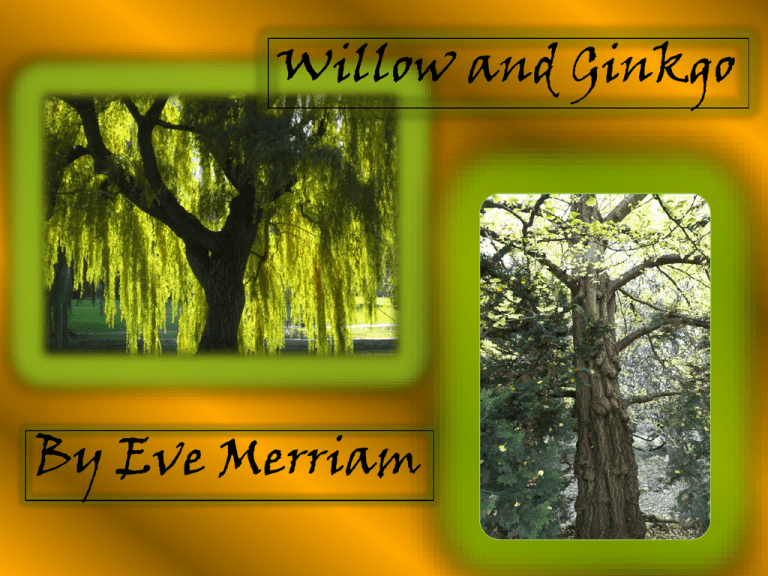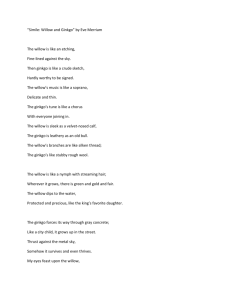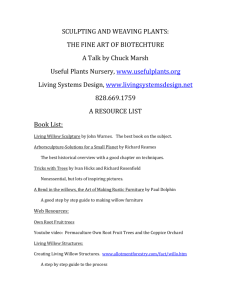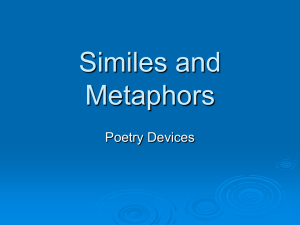Willow and Ginkgo Discuss: Have you ever looked at
advertisement

Willow and Ginkgo By Eve Merriam Willow and Ginkgo Discuss: Have you ever looked at something common in a new way? Why would we take the time to examine an everyday object with fresh eyes, new attitude, or from a different angle? Literary Analysis Simile: Look for the words “like” or “as” when finding a comparison. “The willow is LIKE an etching, Fine-lined against the sky.” Literary Analysis Metaphor: Look for a comparison of two things without the use of the words “like” or “as.” Tranquility Time slides a gentle ocean waves upon waves, washing the shore, loving the shore. Willow and Gingko Extended Metaphors: Metaphors that extend over several lines, stanzas, or an entire poem. The fog comes in on little cat feet. It sits looking over the harbor and city on silent haunches and then, moves on. - 'Fog' - Carl Sandburg. There can be several things that can be compared to a 'fog' in our life. It could be the feelings that one has, the problems in ones life or maybe even death. Willow Tree Willows usually have soft, pliant, but tough wood, with slender branches. Willows are found primarily on moist soils in cold and temperate regions of the Northern Hemisphere. The leaves and bark of the willow tree have been mentioned in ancient texts as remedy for aches and fever, and the Ancient Greek physician, Hippocrates wrote about its medicinal properties in the fifth century BC. Native Americans across the Americas relied on it as a staple of their medical treatments because willows contain a substance that chemically resembles aspirin. It temporarily relieves headache, stomachache, and other body pain. The Ginkgo is a living fossil; it is a unique species recognizably similar to fossils dating back 270 million years. They are native to China. The tree was widely cultivated and introduced early in human history, and has various uses as a food and in traditional medicine. Ginkgos are large trees, normally reaching a height of 66–115 feet, with some specimens in China being over 164 feet. The tree has somewhat erratic branches, and is usually deep rooted and resistant to wind and snow damage. Can words create pictures? Have you ever been surprised when the movie version of a character in a book you have read didn’t look like the one you had pictured in your head? To enjoy a poem, take time to visualize the words and form pictures in your head. Pay attention to how the author is describing the way something looks, feels, smells, sounds or even tastes. “The willow’s branches are like silken thread; The gingko’s like stubby rough wool.” The willow is like an etching, Fine-lined against the sky. The ginkgo is like a crude sketch, Hardly worthy to be signed. The willow’s music is like a soprano, Delicate and thin. The ginkgo’s tune is like a chorus With everyone joining in. Analyze the poem, “Willow and Ginkgo” by Eve Merriam. Compare the willow tree and the gingko tree using the literary device of similes. Understand how the use of similes drive the images of this poem.











